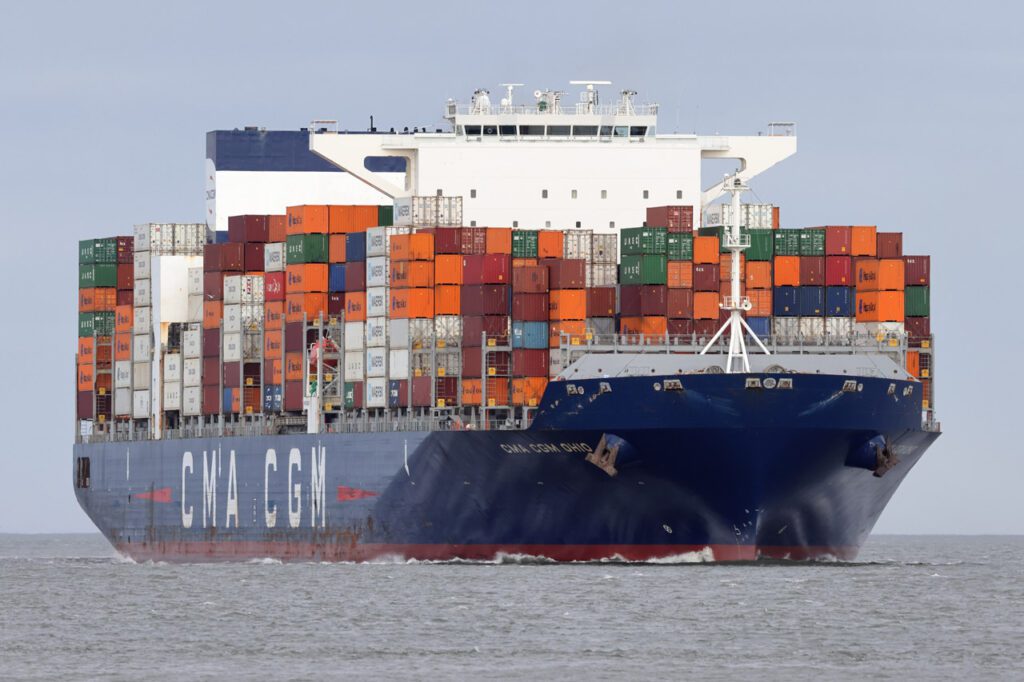Introduction:
Seaworthy and ‘fit for the planned voyage’ container securing demands a combination of skilled planning, certified and well maintained securing equipment, and properly trained crew and stevedores to accomplish. If one element is deficient, then – combined with heavy weather – this ‘weakest link’ can cause of a major loss of containers overboard. This Risk Bulletin reviews container securing regulation, hazards and essential precautions.
Background
Since the beginning of the container shipping industry in the mid 1950s, the secure lashing of containers has always been a challenge. This challenge intensified with both the increase in container ship utilisation and their size, which now presents ships of up to 24,000 TEUs – with container stack heights up to 10 units high – to sometimes ferocious ocean weather.
Not surprisingly, the loss of containers overboard has become common. Negative impacts and liabilities include cargo loss and damage, crew injury or death, environmental pollution, 3rd party vessel collision with floating containers and reputational damage.
NOTE: The World Shipping Council’s (WSC’s) June 2024 Containers Lost at Sea Report advises that 221 containers were lost in 2023. This was the lowest annual loss number (previously 661) ever reported since 2008. Despite the 2023 reduction, the WSC report emphasises “… the ongoing need for stringent safety measures and constant vigilance, as every container lost at sea is one too many.”
The two most recent major losses have been the 9 July 2024 loss of 44 containers and the 16 August 2024 loss of 99 containers from two CMA CGM container vessels off the coast of South Africa. Although not yet fully investigated, these incidents appear to have been due to container stack collapses in severe weather.
In both cases, the vessels involved had been detoured away from their regular route through the Suez Canal – due to the threat of Red Sea Houthi attacks – to pass round the Cape of Good Hope, a notoriously dangerous weather area during South Africa’s winter months. Fortunately, no crew members were injured, and the lost containers did not contain IMDG cargo. However, costly deviations to ports of refuge for container damage assessment and resecuring were required.
NOTE: The above two incidents will likely be the subject of formal investigations to establish the cause and make recommendations to prevent recurrence. Meantime, the indications are that the current container securing regulations, codes and guidelines and their implementation (as described below) may not yet be sufficient to ensure the safety of container ships, their container cargoes, their crews and the marine environment.
Container Securing Regulations, Codes and Guidelines
SOLAS Chapter VI: Regulation 2, Cargo Information/Verified Gross Mass (VGM)
This regulation, as amended by MSC.1/ Circ.1475 (in force July 2016) includes the mandatory requirement that (as stated on the IMO VGM web page):
- The shipper [as stated on the bill of lading] is responsible for providing the verified weight [VGM] by stating it in the shipping document and submitting it to the Master … and to the terminal representative sufficiently in advance to be used in the preparation of the ship stowage plan.
- The VGM is a condition [i.e. a pre-condition as the master is entitled to reject] for loading a packed container onto a ship.
If the VGM data is not provided, then subject to agreement between all the parties as to cost, the master and terminal representative may arrange for the container to be weighed on behalf of the shipper.
NOTE: The SOLAS requirement for the shipper’s accurate declaration of VGM before loading is supplemented and reinforced by the CSS Code (Code of Safe Practice for Cargo Stowage and Securing) and MSC.1/Circ.1498 as described and linked below.
The above VGM requirement was mandated after many incidents caused by the misdeclaration of container weights inclusive of container unit and stack collapses and, much more seriously, container vessel capsizes due to instability. As such, no master should ever accept a container for loading on board for which reliable VGM data is not declared or cannot be obtained by independent container weighing.
NOTE: Members and their masters should keep in mind that the above SOLAS regulation imposes no sanctions against shipper misdeclarations to enforce compliance. The Loadstar shipping website article headline, ‘VGM container weight misdeclaration rampant at most ports’, is therefore not surprising. Of interest is that some container lines have imposed their own financial penalties on shippers (e.g. Singapore’s PIL) for VGM misdeclaration, often discovered during the terminal entry weigh-in process.
SOLAS Chapter VI: Regulation 5, Stowage and Securing.
This regulation includes the mandatory requirement that:
“Cargo units, including containers, shall be loaded, stowed and secured throughout the voyage in accordance with the Cargo Securing Manual approved by the Administration [flag state/Class RO] …The Cargo Securing Manual [CSM] shall be drawn up to a standard at least equivalent to the guidelines developed by the [IMO] Organisation.”
NOTE: The IMO guidelines referred to above are provided by MSC.1/Circ.1353/Rev.2, Revised Guidelines for the Preparation of the Cargo Securing Manual, issued 7 December 2020.
A CSM is mandatory for all SOLAS regulated vessels, i.e. all vessels other than tankers and bulk carriers not carrying break bulk cargo of 500 GT or over-engaged in international trade. The preparation of the CSM is complex and usually requires specialist knowledge to ensure full compliance. This is commonly provided by a Class Society which may then, as a flag state Class RO, also provide the required flag state approval.
NOTE: Members who operate vessels of the type described above in international trade should already be in full compliance. It is important that Members check that the CSMs on board their vessels have been approved by their current flag state and/or the flag state’s appointed Class RO. Members will otherwise be in breach of SOLAS and their P&I cover will be prejudiced.
NOTE: Members whose vessels are in domestic trade and not regulated by SOLAS should confer directly with their flag state authorities or appointed Class RO to ascertain the precise NCVS equivalent requirement for the provision of a CSM document on board their vessels, inclusive of its formal approval and endorsement.
The aforesaid IMO Revised Guidelines are divided into 5 Chapters, as summarised below.
Chapter 1, General – includes definitions such as “standardised cargo” (which includes container units), requirement for the working language of the ship, and a list of “general statements” inclusive of the requirements that:
- The principles of good seamanship and securing practice always prevail.
- The CSM is consistent with the vessel’s trim and stability booklet.
- The cargo securing arrangements specified are based on the transverse, longitudinal and vertical forces which may be encountered.
- Securing devices must be appropriate to cargo type and if new/alternative devices are introduced, the CSM must be revised.
- Instructions on the strength, use, maintenance and ‘if worn/damaged’ replacement of all devices are be provided.
- Safe access for personnel/crew are be provided in accordance with a ‘Cargo Safe Access Plan’ (CSAP).
Chapter 2, Securing Devices & Arrangements – inclusive of the provision of the full details and records of:
- All portable securing devices inclusive of all container fittings (e.g. container shoes, interlocking devices chains, turnbuckles, chains, etc.) together with full documentation providing manufacturer’s name, type identification, strength testing and maximum securing load (MSL).
- All fixed cargo securing points/devices on bulkheads, decks and deckheads inclusive of type (e.g. pad eye, container fitting, etc.) and documented MSL.
- All necessary inspections of securing devices including both routine visual inspections, periodic examination/testing, procedures for rejection and replacement and their detailed recording.
Chapter 3, Stowage and securing of Non-Standardized and Semi-Standardised Cargo – NOTE: not directly relevant to this Risk Bulletin.
Chapter 4, Stowage and Securing of Containers and Other Standardised Cargo – inclusive of the provision of:
- Handling and safety instructions for securing and unsecuring of container securing devices by crew and stevedores.
- On deck and underdeck stowage and securing plans showing maximum stack masses and heights.
- Alternative stowage of containers with differing dimensions.
- Use of specified securing devices and limiting parameters.
- Wind and sea forces acting on containers.
- Advice on reduction of stack mass and height where high initial stability cannot be reduced.
NOTE: The ICS Proposal to Revise MSC.1/Circ.1353/Rev.2 dated 27 Feb 2023 recommends the use of supplementary computer software to improve the accuracy of CSM container securing data should be formally recognised under Chapter 4. This proposal has been endorsed by IACS ( URC 6 – Lashing Containers and URC 7 – Approval of Container Securing Systems) and is currently under IMO assessment. Meantime, ‘next generation container lashing’ software is already available and reportedly in use.
Chapter 5, Cargo Safe Access Plan (CSAP) – is required for ships specifically designed for carrying containers and in accordance with the Code of Safe Practice for Cargo Stowage and Securing (CSS) Code, Annex 14, inclusive of the provision of protective handrails, walkways, lighting, vessel access, etc.
IMO Code of Safe Practice for Cargo Stowage and Securing (CSS) Code 2021 Edition
The IMO’s CSS Code webpage explains the purpose of the Code which is to provide an international standard to promote the safe stowage and securing of cargo, inclusive of containers.
The contents of the CSS Code are wide ranging in that it covers the stowage and securing of both break bulk and container cargoes. With reference to container securing, the following sections are of special relevance:
Chapter 3 – Standardised [Container] Stowage and Securing Systems.
Chapter 6 – Actions which may be taken in heavy weather.
Chapter 7 – Actions which may be taken once cargo has shifted.
Annex 1 – Safe stowage and securing of containers on deck of ships which are not specially designed and fitted for the purpose of carrying containers.
Annex 14 – Guidance on providing safe working conditions for securing of containers on deck.
Appendix 1 – Resolution A.489(XII) – Safe stowage and securing of cargo units and other entities in ships other than cellular containerships.
Appendix 2 – Revised guidelines for the preparation of the Cargo Securing Manual (MSC.1/Circ.1353/Rev.2).
The CSS Code supplements SOLAS Chapter VI and the associated Revised Guidelines by providing the recommended detail necessary for the preparation of the mandatory and previously described CSM document. It is, therefore, essential that shipboard CSM documents are updated to specifically incorporate the standards set by the latest 2021 edition of the CSS Code.
IMO IMO/ILO/UNECE Code of Practice for Packing of Transport Units (CTU Code) 2014 Edition
Many transport incidents are caused by poor practices in the internal packing of cargo containers, including inadequate internal securing of the cargo, overloading and incorrect declaration of contents. The CTU Code, 2014 Edition provides a non-mandatory but recommended global code of practice for the handling and internal packing of shipping containers for transportation by sea and land.
With reference to the shipment of containers by sea on board both container and ro-ro vessels, important supplementary information and recommendations are provided by the IMO’s MSC.1/Circ.1498, Informative Material Related to the CTU Code, 16 December 2014. This comprehensive and well-illustrated 176-page guide includes helpful advice relating to the safe securing of container cargoes both internally and externally, together with information on the consequences of overloading containers and weight and contents misdeclaration.
Members whose container services include the packing and unpacking of containers need to ensure that these operations are accomplished in conformance with both the CTU Code and MSC.1/Circ.1498. Further, that these guidelines are specifically incorporated into their shore terminal operations manuals and their vessel CSM documents.
Members who are not directly involved in the container packing and unpacking process need to be fully aware of the risks relating to the improper internal stowage and securing of cargo inside containers inclusive of overloading and weight and contents misdeclaration. It is therefore recommended that specific reference is made to the CTU Code and MSC.1/Circ.1498 in their vessel CSM documents.
Container Vessel Stability and Heavy Weather Avoidance
Vessel stability and the impact of heavy weather are, of course, closely connected to the ability of container securing systems to withstand the six types of vessel motion, inclusive of violent heaving, swaying, rolling, pitching, surging and yawing. If stability and vessel motion limits exceed those on which the CSM is based and the level of securing accomplished, then the securing will likely fail, and containers will be lost overboard.
Members are referred to Risk Bulletins No. 30, Stability Vigilance: Containerships and Cargo Ships Carrying Containers and No. 54, Marine Weather Forecasts and Weather Avoidance. These Bulletins contain important stability and weather hazard advice and loss prevention recommendations. These recommendations should always be adhered to in conjunction with the careful application of approved CSM criteria and the associated Regulations, Codes and Guidelines referred to in this Risk Bulletin.
Conclusion and Takeaway
The securing of containers on board both purpose-built container ships and other cargo vessels is a complex but critical process. It is, therefore, essential this process be accomplished by reference to an approved and updated CSM, together with careful attention to vessel stability and voyage planning, which includes routing away from forecast storm centres. To do otherwise is to invite a ‘weakest link’ container loss, major cargo claims and reputational damage.
Members are encouraged to negate ‘weakest link’ losses by conducting a full review of the CSM documents on board their vessels with a special focus on the container securing aspects. This review should include checking full compliance with SOLAS Chapter VI, Regulations 2. and 5., together with adherence to the latest editions of the CSS and CTU Codes and all associated IMO Guidelines. Members are also encouraged to promote the training and familiarisation of their masters and crews with the aforesaid Regulations, Codes and Guidelines together with their application and ongoing internal and external audit by incorporating these requirements – both mandatory and recommendatory – into each vessel’s ISM Code or NCVS SMS and PMS manual and procedures.


